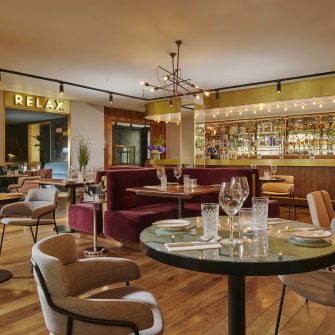Dublin: A City Steeped in History
The capital city of Ireland is steeped in cultural significance. Home to some of Ireland’s most prized national treasures, and the stomping ground of the Celts, Vikings and Normans before a long period under British imperialism, its green fields and old stone walls could tell a thousand stories of the troubled history of the area.
The exact date when Dublin was founded is unknown, but there are references of Dublin’s bay throughout history, the earliest dating back to Ptolemy’s document in 140AD. Before the Viking invasion of Ireland, Dublin is said to have been occupied by the Celts in around 700 BC, from where it is said to have derived its Gaelic name, Baile Átha Cliath (The Ford of Hurdles). Dublin’s name in English is said to have been adapted from the Viking settlement in 800 BC, called Dubh Linn (Black Pool).
Dublin’s prehistoric history is dwarfed by the 800-year long British rule, which marks Ireland’s most poignant and significant historical milestones.
Dublin’s prehistoric history, however, is dwarfed by the 800-year long British rule, which marks Ireland’s most poignant and significant historical milestones, shaping Irish culture to what it is today. Dublin Castle was home to London’s UK Parliament for most of this time, including during the Great Famine between 1845 and 1849, which resulted in the greatest loss of life in 19th Century Europe – further straining relations with the British Crown and breeding Irish republicanism. Having endured a tumultuous period of British rule, Dublin became the centre point for the 1916 Easter Rising which lead to independence over British rule for 26 of Ireland’s 32 counties, establishing the Irish Republic in 1922.
To this day, one of the most prominent visual references to Dublin’s political history can be seen through the North/South divide which was formulated during the period of King George’s reign, through a stark contrast of living conditions between the impoverished Irish Catholic majority to the North of the Liffey, and the British Protestant elite who occupied mostly the Southern part of the river, still marked by famous Georgian architecture around South Dublin’s Grafton Street and Merrion Square.
Jump To Dublin’s Best Attractions
Cosmopolitan Dublin
Modern Dublin has evolved into a buzzing cosmopolitan centre, home to a rich diversity of cultural influences. Most of this was heavily fueled by the ‘Celtic Tiger’ during the 1990s to the early 2000s – a period of significant economic growth for Ireland.
When we think of modern Dublin, many of us may think of the world-renowned Temple Bar, which has become one of Dublin’s most famous attractions for enjoying a pint of Guinness while listening to some traditional Irish music, or ceol agus craic as the locals call it. While Temple Bar as an entertainment area is certainly a must-see for many tourists – the area of Temple Bar actually got its name from the raised estuary (barr) which was built to hold back water from the River Liffey, known as “Temple Barr”, named after Sir William Temple. So the next time you go for a pint in Temple Bar, you can officially say you’re experiencing a truly historical part of Dublin’s labyrinthine heritage!
Modern Dublin has evolved into a buzzing cosmopolitan centre, home to a rich diversity of cultural influences. Most of this was heavily fueled by the ‘Celtic Tiger’ during the 1990s to the early 2000s – a period of significant economic growth for Ireland, where the city finally emerged from the shadows of endemic poverty and religious oppression and caught up with some of its more affluent European neighbours. During this time, Dublin became a business hub for many international tech giants including HP, Oracle and Citibank, attracting an influx of people from across the globe to Ireland’s humble capital with ripe job openings, before giving rise to the emergence of the lavish ‘Silicon Docks’ as Google opened it’s Dublin headquarters in 2002, followed soon after by other tech giants such as Facebook, Twitter, Accenture, Hubspot and Linkedin
Even throughout the slowing down of the Irish economy fueled by the global recession of 2008, the “Big Smoke” remains a vibrant melting pot of culture and festivity; pulsating with the fruits of a rich love of art, music, and theatre. Dotted with alternative cafes, thrift markets, and music gigs, Dublin’s bustling ‘hipster’ scene around Temple Bar and The Liberties resembles a small scale version of London’s Brick Lane. While the more glamorous cocktail bar areas of Dawson Street and St. Stephen’s Green attract a host of polished Instagram aficionados.
Artistically speaking, modern Dublin has been shaped greatly by its historical theatre scene, which displays some of Ireland’s most talented theatrical talent today. For such a small city, it has bred some of the world’s greatest theatrical minds, from Bram Stoker to Oscar Wilde—to which we still pay homage in Dublin’s huge theatre and literature scene. Dublin has lots of venues where you can enjoy a good play. If you’re looking for something similar to London’s West End, the Gaiety (1871) and Bord Gáis Energy (2010) theatres host some of the best international shows like Riverdance and The Rocky Horror Show—while smaller venues like Smock Alley (1662) and the Abbey Theatre (1904) will bring you a more raw Irish theatre experience, with many plays focusing on Irish history or modern-day Ireland.
















